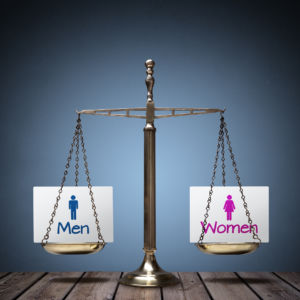On Equal Pay Day — which this year fell on April 12 — President Obama lamented the fact that American women make 77 percent of what American men make. Alas, this 77 percent figure is both inaccurate and misleading.
Start with the former. The latest Department of Labor data show that women working full-time make 81 percent — not 77 percent — of full-time men’s wages. Likewise, President Obama’s 77 percent claim is misleading because it averages earnings for all full-time women — no matter their education, profession, experience or hours worked — and earnings for all full-time men. As such, it is not an apples-to-apples comparison.
Consider the following. The Labor Department classifies “full-time” work as any workweek of more than 35 hours; but men typically work more hours than women. Among full-time workers, men work 43 hours per week, on average, and women, 41 hours per week.
Women who work exactly 40 hours per week earn 89 percent of what their respective male peers earn. (When unmarried, childless workers under 30 are compared, a “reverse wage gap” appears, with women earning $1.08 for every dollar earned by comparable men.)
The causes of the remaining 11 percent wage gap are numerous. Take men’s and women’s field of study in college. Men outnumber women in nine of the 10 highest-paying majors, while women outnumber men in nine of the 10 lowest-paying majors.
According to the Georgetown University Center on Education and the Workforce, women make up a statistically insignificant share of petroleum-engineering majors and only 7 percent of electrical-engineering majors — degrees that open the door to lucrative professions. On the other hand, women account for 59 percent of studio-art majors, 56 percent of drama majors and 88 percent of elementary-education majors — degrees that lead to relatively low-paying careers.
Employers often pay more for employees with strong quantitative skills. And, according to the American Community Survey, majors that require high SAT math scores are more likely to lead to higher salaries; yet for various reasons, women are less likely to choose such majors.
After graduation, more women than men work for nonprofits, which pay less: according to the Labor Department, of the 9.3 million U.S. workers in the private, nonprofit sector in 2015, 6.3 million were female.
Women are also more likely to leave the labor force temporarily to raise children, which contributes to the work-experience gap between men and women. (According to the Kaiser Family Foundation, 97 percent of adults who identify as “homemakers” are women.)
In a 2016 paper, Francine Blau and Lawrence Kahn of Cornell University find that “recent research suggests a continued and especially important role for work force interruptions and shorter hours in explaining gender wage gaps in high skilled occupations.”
Women are more likely to work part-time, too: in 2015, 25 percent of women worked part-time, compared with 12 percent of men. (However, when part-time workers are compared in apples-to-apples fashion, the wage gap is reversed: women earn $1.03 for every dollar earned by comparable men.)
It is also true that men work in more dangerous jobs, which often pay more to compensate for the greater risk. In 2014, men experienced 92 percent of fatal injuries on the job, despite working 57 percent of total hours. Men, in other words, are roughly nine times more likely to die of work-related injuries. Employers cannot be blamed for the fact that men are vastly more likely to enter professions that kill or severely maim them.
Various academic studies have found that, when American women are compared with men in the same jobs, the same credentials and the same job tenure — true apples-to-apples comparisons — the wage gap narrows to 3 cents to 7 cents on the dollar.
This small remaining wage gap may be due to discrimination or to factors that have not yet been measured. To correct this alleged injustice, congressional Democrats introduced the Paycheck Fairness Act. But despite President Obama’s enthusiastic support, the PFA failed to pass a Democratic-controlled Congress; under the current Republican-controlled Congress, it has no chance of becoming law.
However, if the PFA were to become law, the increased threat of litigation over pay differences between men and women, as well as between certain minorities and whites, would undoubtedly raise the cost of employment, thereby discouraging hiring.
Under the PFA, workers would be included in class-action lawsuits against employers unless they specifically opted out, raising the cost of litigation regardless of whether the Equal Employment Opportunity Commission ruled in favor of the plaintiffs. Employers found guilty of wage discrimination would be required to pay uncapped punitive damages, as well as back pay — with at least a quarter of the total likely going to plaintiffs’ lawyers.
Further, the PFA would allow employers to defend differences in pay — resulting from education, training and experience — between men and women only if such factors could be justified, in court, on the grounds of “business necessity.” And employers would be prohibited from using fewer hours worked, less education or lower productivity to justify salary differences.
American women who believe that they are victims of wage discrimination have legal avenues for redress. Indeed, since 1963, it has been illegal to pay women less than men for the same work.
Isolated incidents of discrimination no doubt exist and may never be stomped out entirely. But when all the factors behind divergent pay numbers are accounted for, men and women earn roughly the same. America’s equal-pay-for-equal-work crusaders have already won.

